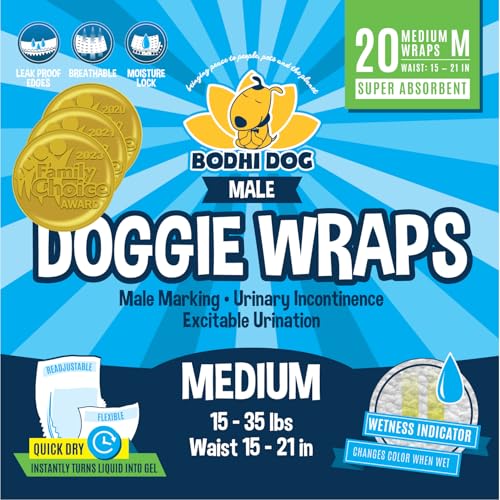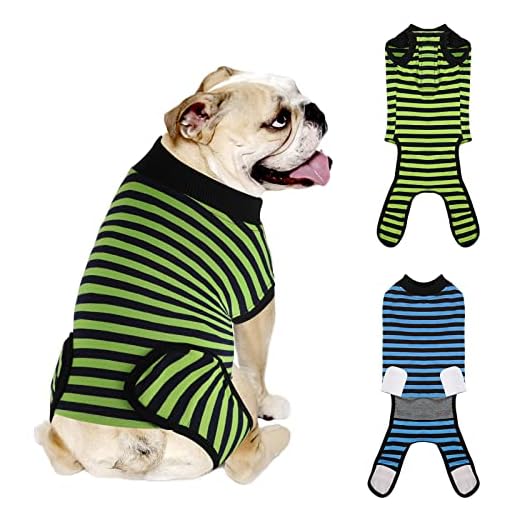




For most breeds, the ideal age for surgical sterilisation falls between six and twelve months. This timeframe allows for adequate growth while mitigating the risk of certain health issues and behavioural problems. Early intervention can lead to a calmer temperament and reduce the likelihood of aggression and territorial behaviours.
Research indicates that waiting until physical maturity can lead to an increased risk of specific health conditions, such as certain cancers. For larger breeds, consultation with a veterinarian may reveal an appropriate window extending to around eighteen months. Individual dog behaviour and health history play a significant role in determining the best timing.
Regular veterinary check-ups provide opportunities to discuss the benefits and risks associated with this procedure, tailored to each canine companion’s needs. It’s essential to consider how the decision aligns with lifestyle, training, and socialisation objectives for the pet. Taking a proactive approach ensures a well-adjusted and healthy furry family member.
Timing for Surgical Procedure
Optimal age for this surgical intervention typically falls between 6 to 12 months, aligning with the onset of puberty in canines. Many specialists recommend waiting until the animal reaches at least 12 months, especially for larger breeds, as this allows for proper physical development. It’s crucial to consult with a veterinarian familiar with the specific breed’s growth patterns to determine the best time for the procedure.
Health Benefits
This surgical option can significantly reduce risks associated with certain health conditions. For instance, testicular cancer and prostate issues are less prevalent in pets that have undergone the surgery. Additionally, it may help mitigate behavioural problems such as aggression or roaming, which can be problematic during maturity. Understanding these aspects can aid in making an informed decision regarding this medical procedure.
Considerations Before the Procedure
Before proceeding, assess the individual animal’s health and behaviour. A thorough veterinary examination can identify any underlying conditions that may influence the timing. Also, consider lifestyle factors and potential environmental influences. For example, if your pup is frequently exposed to other canines, the risks of unplanned breeding may necessitate a sooner intervention. Remember to weigh all factors carefully, including the potential benefits of this procedure against any risks.
For those involved in industries requiring heavy machinery, understanding the importance of maintenance can be as vital as making decisions about pet care. If you’re interested in high-quality tools, check out the best industrial air compressors for your needs.
Understanding the Ideal Age for Neutering
The optimal timeframe for this procedure typically falls between six and twelve months. At six months, many breeds are fully mature for the operation, reducing the risk of unwanted behaviours associated with testosterone. For larger breeds, waiting until twelve months may be more beneficial, allowing for full physical development before surgery.
Physical Considerations
A key factor is the growth plate closure, which significantly impacts joint development. In larger breeds, delaying until they are around twelve months can help prevent issues related to bone strength and joint health. My own experience with a Labrador showed that waiting until a year helped him grow into a strong, stable adult without the risk of hip dysplasia.
Behavioural Factors
Behavioural maturation also plays a role; earlier procedures have shown a decrease in some aggressive tendencies. However, waiting can sometimes allow for natural behaviours to develop, which may later be managed more effectively. I noticed that my younger dog exhibited less anxiety and better social skills after waiting a bit longer. Each pet is unique, so considering individual temperament alongside breed characteristics is essential.
Assessing health risks associated with early neutering
Opting for an early surgical procedure can lead to specific health concerns. Studies show that premature interventions may increase the likelihood of certain conditions, such as joint disorders and cancers. For example, large breeds experience a higher incidence of hip dysplasia and cranial cruciate ligament tears when altered too soon. Waiting until physical maturity may mitigate these risks.
Research indicates a correlation between timing and the development of certain cancers. Male canines neutered before reaching maturity may face a greater risk of testicular and prostate issues later in life. It’s crucial to consult with a veterinarian familiar with your breed’s unique health profiles. This way, an informed decision can be made regarding the timing of the procedure.
Nutrition also plays a role in overall health post-surgery. Ensuring a balanced diet, like the best dog food for huskies and german shepherds, can support recovery and long-term well-being. A proper diet aids in maintaining an optimal weight, which is essential for joint health and can offset some risks associated with early interventions.
Monitoring behaviour and health changes is equally important. Altered behaviour, such as increased aggression or anxiety, may occur post-procedure. Observing these shifts can help identify any adverse effects early, allowing for prompt veterinary consultation.
In conclusion, careful consideration of health implications related to early surgical intervention is necessary. An informed approach, weighing both the risks and benefits, will lead to better long-term health outcomes for your canine companion.
Behavioural changes post-neutering: what to expect
After the procedure, noticeable shifts in behaviour are common. While individual responses vary, these changes can generally be grouped into several categories.
Reduction in Aggression and Dominance
- Many dogs exhibit less aggressive behaviour towards other males.
- Fewer displays of dominance are often reported, leading to a more harmonious environment.
- Social interactions may improve, allowing for better relationships with both humans and other animals.
Altered Energy Levels
- Some might experience a decrease in hyperactivity, resulting in a calmer disposition.
- Less roaming and wandering tendencies can be observed, as the drive to seek out potential mates diminishes.
- However, it’s crucial to maintain an active routine to prevent weight gain.
It’s essential to monitor changes closely over the weeks following the procedure. Adjusting training and socialisation strategies may be beneficial to accommodate the new behaviour patterns. Each canine is unique, and understanding their specific adjustments will help in nurturing a balanced and happy companion.
Impact of Neutering on Breed-Specific Characteristics
Neutering can significantly influence the traits of various breeds. For instance, larger breeds like Great Danes or St. Bernards may show reduced aggression and territorial behaviour when sterilised at the right age. This can lead to a more harmonious living environment, especially in multi-pet households.
On the other hand, certain smaller breeds, such as Dachshunds or Chihuahuas, might not experience the same behavioural shifts. They often retain their spirited nature, but some studies suggest that early sterilisation may lessen their tendency to mark territory. This can be a relief for those facing house-training challenges.
Physical Traits and Health Concerns
From a physical perspective, some breeds may experience changes in their body composition after sterilisation. For example, Labrador Retrievers can gain weight more easily if their diet and exercise routines aren’t adjusted post-procedure. It’s vital for owners of such breeds to monitor their pets’ nutrition and activity levels to prevent obesity.
Long-Term Behavioural Outcomes
Long-term behavioural outcomes differ across breeds. For instance, border collies, known for their intelligence and energy, may require more stimulation and exercise to prevent boredom after undergoing the procedure. Owners should be prepared to engage in regular, rigorous activities to channel their energy positively.
In conclusion, the timing and decision to sterilise can have a lasting impact on a dog’s characteristics, varying significantly by breed. Understanding these nuances can help owners make informed choices tailored to their furry companions.
Considerations for Dogs with Pre-existing Health Conditions
For canines with existing health issues, timing for surgical procedures requires careful evaluation. Consulting with a veterinarian who understands the specific health challenges of the pet is critical. Each case is unique, and a tailored approach is necessary.
Common Health Conditions
Several conditions can influence the decision regarding surgical intervention:
| Health Condition | Considerations |
|---|---|
| Obesity | Weight management is essential; surgery may be riskier for overweight animals. |
| Heart Disease | Potential for complications during anaesthesia; thorough cardiac evaluation needed. |
| Diabetes | Blood sugar regulation must be stable prior to any surgical procedure. |
| Allergies or Skin Conditions | Skin infections may complicate recovery; ensure treatment is in place. |
Recovery Considerations
Post-operative care must be adjusted based on the dog’s existing health status. Monitoring for complications is crucial, as certain conditions may lead to extended recovery times or increased susceptibility to infections. Regular follow-ups with the vet can help ensure that any arising issues are addressed swiftly.
Cost implications of neutering: budgeting for the procedure
Estimating expenses related to the procedure can save pet owners from unexpected financial strain. Prices vary significantly based on location, veterinary clinic, and the specific needs of the animal. Generally, the cost can range from £100 to £300.
Factors influencing costs
- Geographic location: Urban areas tend to have higher prices due to increased overhead costs.
- Clinic type: Private practices may charge differently compared to non-profit organisations or low-cost clinics.
- Size and breed: Larger breeds often incur higher fees due to anaesthesia and surgical requirements.
- Preoperative tests: Some clinics may require blood tests or other examinations before the procedure, adding to the total cost.
Additional expenses
- Post-surgery care: Prepare for potential follow-up visits or medications.
- Microchipping: Consider this option if not already done, as it can be a worthwhile investment for safety.
- Pet insurance: Check if your policy covers surgical procedures, which can ease financial burdens.
It’s wise to budget beyond just the surgical fee. Many clinics offer payment plans, enabling pet owners to manage costs more effectively. Planning ahead can ensure financial readiness and a smooth experience for both the pet and the owner.
Consulting Your Vet: Key Questions to Ask
Before making a decision regarding surgical procedures for your canine companion, it’s crucial to gather insights from a veterinary professional. Consider asking these targeted questions during your consultation.
Health and Timing
“What is the best age for this procedure based on my dog’s breed and size?” This question helps establish a timeline tailored to your dog’s specific needs. Additionally, inquire about any existing health conditions that may affect the timing.
Post-Procedure Care
Understanding recovery is vital. Ask, “What can I expect in terms of recovery time and care?” Your vet can provide guidance on managing pain and activity levels after the operation. Also, consider asking about potential behavioural changes: “How might my dog’s behaviour shift following the procedure?” This can prepare you for any adjustments that may be necessary in your training approach.
Lastly, discussing potential costs is important. Query, “What are the total costs involved, including any follow-up care?” This will help you budget effectively for the procedure and any associated expenses.







